Comic Books
Table of Contents
Comic Collecting
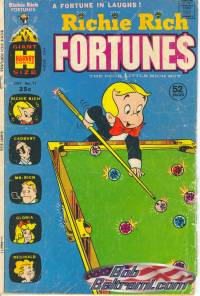
In the early '70's, my mom sometimes took me along when she went to Johnny's Market for groceries. While we were there I would choose a comic book from the news stand and she would buy it for me. At seven years old I seemed to like Richie Rich. But by the time nine rolled around I had moved to the superhero genre, especially the Flash, Green Lantern and Captain Marvel (Shazam!).
I didn't collect comics back then, but mom managed to save some of them, including the Richie Rich Fortunes #11 from July of 1973, right, and Flash #225 from February of 1974, below. They're not in the greatest shape. But they're mine, which makes them priceless.
From what I can tell, based on the issue dates of my books, I stopped buying comics in mid 1978. I don't recall any particular reason. I was 12 years old. So I probably wasn't going to the market with Mom much anymore. Comics also found competition in an Atari VCS (or 2600).
When I "returned" to comics in my late 20's, it wasn't as if I suddenly decided to get into comic books. It just happened through a series of circumstances.
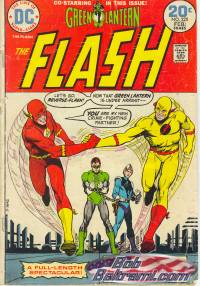
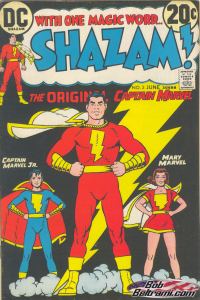
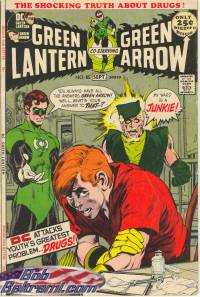
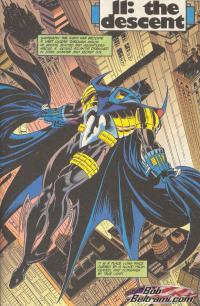
In mid-summer 1993, I had some time to kill after putting my clothes in the dryer at the laundromat down the street from my house. I decided to fill the time with a walk along the strip mall and found myself a few doors down in front of a little comic shop with windows completely covered over by posters, pictures and other promo materials. In the door was a life-sized poster of the "New" Batman (First appearance, right, in Batman #500). The new design was a complete departure from the Batman most of us have seen. Curious, I went inside. The person at the counter answered a few of my questions, but when I walked out I hadn't purchased anything.
However, after several weeks I found that my curiosity about this replacement for Bruce Wayne was not diminishing. I returned to the comic shop to purchase a few books, including Batman #497 (below, left) that details Bruce Wayne's fall at the hands of Bane. Soon after, I began to collect. While I started with Batman, other current titles crept their way into my subscription list, including several of the X-titles, some Vertigo (Sandman, Preacher) and more Image than I'm comfortable admitting to owning. At the same time I was buying back issues of the recent Bat-books and my favorite titles from the seventies and earlier: Flash, Green Lantern and Shazam!.
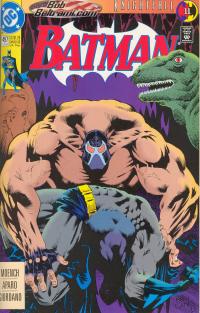
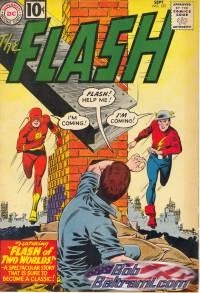
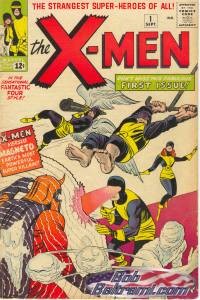
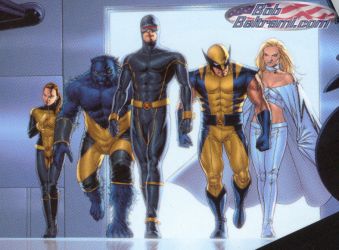
After I returned to Ukiah in the late '90s it was nearly impossible to pick up back issues. The local comic store made its money on new books so back-issue stock was thin and the owner didn't make much of an effort to expand it. Overall in the industry, the glut was in full swing, so new issues were plenty. Collecting new comics was not unlike wading through an onslaught of computer-colored glossy-papered fluff, usually lacking in imaginative storytelling and suffering from rushed artwork. Publishers abused gimmick crossovers and special / signed / alternate / multiple version covers so often, it cooled my comic passion until eventually I stopped purchasing new comics altogether.
Ironically, the final straw came courtesy of Batman. A storyline in 1998 revolved around a cataclysmic earthquake that hit Gotham, destroyed Wayne Manor and the Bat Cave and caused Gotham to be declared a "No Man's Land". At the time, I had subscriptions to Batman and Detective Comics, the two flagship titles. Unfortunately the event itself, the earthquake, occurred in one of the other Bat-titles (Catwoman, Robin, Nightwing, Batman Chronicles or one of six or seven others) and then continued for 4 or 5 issues before Batman even hit the shelves. As a result, by the time I had the issue in my hands, Gotham had long-since been destroyed and Batman and Nightwing were in the midst of a chase involving some new villain named "QuakeMaster". So, frustrated, a bit confused, and more than a little resentful, I spent a lot of time and effort in an attempt to hunt down the relevant books so I could actually read and enjoy the story. Unfortunately the recent back issues were all sold out. So, that was it, I was fed up. By late 2000 I gave up the new comic market and haven't read a current comic since.
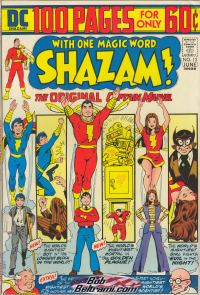
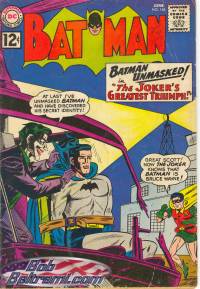
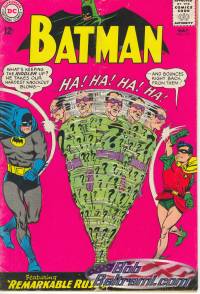
Don't get me wrong. I love comics and I enjoy the hobby. But I can't imagine trying to jump into current comics today. If I knew someone interested? I'd recommend that they find characters and storytellers they like and buy issues from the mid to late '80's to early '90's. The prices are excellent and issues are easy to find so you can start reading and enjoying whole story arcs right away. In my case it took me MONTHS to acquire the recent back issues (at 3-5 times cover price) to know what the heck was going on with the "New" Batman. Ironically, in the end it didn't matter a bit. Bruce Wayne returned and the replacement character is long gone and forgotten.
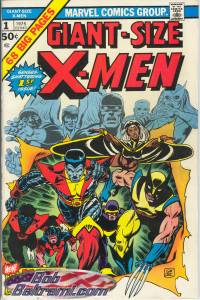
Current age comic books are a reminder of that saying, "you can never go back." Today, Johnny's Market is a vacant lot. Comic art is edgy and stylized and the heroes are overdrawn and over-posed. The best stories have already been told, and like Hollywood, current comics are bereft of new and creative ideas. The books themselves, with heavier-stock glossy papers, smell like your everyday average magazine. No pulp to be found here, but all the cost of an issue of Cosmopolitan.
Nowadays I search for books to fill holes in the collection. Sometimes I buy through E-bay, sometimes I'll use an online comic shop. But it depends on the book, the grade and the price. I'm not picky about having the highest grade comics. But they have to be complete and intact. Fine or better with an occasional Very Good works for me. I buy books to read and enjoy, and don't plan to sell them.
Today, as a collector and reader, the rarest and sweetest acquisitions are those comics that, when I see the cover art or a particular interior panel, or read the story, I realize I read in my youth. A recent example is Shazam #20 (not pictured) that I recognized immediately when I saw the cover. There's memory stirred when I smell the pulp, look at the artwork, read the story and check out the ads for radio-pens, x-ray glasses and Charles Atlas' body-building systems in those older comics. It's more than the characters, the story or the art. It's more than the feel or smell of the paper. It's difficult to describe and easy enough to write off as nostalgia. But that word simply does not do the sensation justice.
Acquisitions
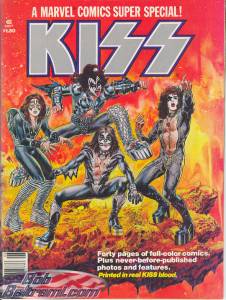
(26-May-06) Marvel Super Special #1 (1977) is a comic / magazine that I owned as a 11 year old. Printed in magazine format, Super Special #1 is the rock band KISS' first appearance in comics and includes two original comic stories along with several printed articles on the band and pictures of the members both on-stage and off. The issue also documents each of the band members having their blood drawn and added to the red ink used in the comic. Hence the cover tag-line, "Printed in real KISS blood."
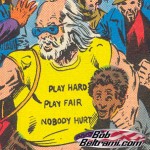
As a side note, my most memorable image from the book doesn't include the band. I remembered that in the early pages of the first story there was a strange character involved in a street brawl who is wearing a t-shirt with the slogan, "Play Hard, Play Fair, Nobody Hurt" on the front. After receiving the book, I found the panel and scanned it. Click on the thumbnail, left, or here. Note: My use of the term "strange" is not meant to disparage wearers of knee-high gym socks, lime green shoes, blue racing goggles or even fur underwear with matching fur cape (but the red man-purse is cute). As I said, it wasn't his appearance that left an impression on my 11 year old brain. It was the slogan.
Trivia Alert: The source of the slogan is Sean Delaney who was a central creative influence during the early formative years of KISS. He has even been called, "one of the masterminds behind the KISS concept." In an interview he once stated, "I am the man that choreographed the entire band and show from the very beginning. That means when I met Gene, he did not move like a demon, or did Paul prance and dance like a she-he. Their hair was not tinted black nor did they have a show. All that came out of my imagination."
He claims to have been the idea man behind the makeup, the costumes, the choreography and staging and even the lyrics to several songs ('Love Gun', 'I Want You' and 'Rock Bottom'), and Delaney credits himself with coining the famous line, "You wanted the best, you got the best, the hottest band in the land, KISS!" Sean passed away in 2003.
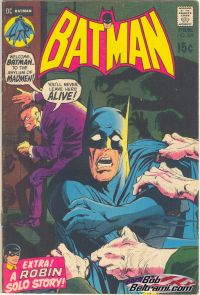
(17-July-06) I was excited to pick up a 59-book lot of early 70's DC Comics that included Batman and Detective Comics issues and a single Green Lantern issue. Notably, many to most of the comics are from Neal Adams' run of covers and art, like the Batman #229 on the right, the Detective Comics #408 below, and the Green Lantern #88 below right.
My appreciation for Adams' work continues to grow as time goes forward. His ability to successfully bring out character emotions through the use of body language and facial gestures, and his attention to perspective, always enhance the story. Just as important, Adams' art portrays heroes as powerful human figures, anatomically correct, without the "Mister Universe" style prevalent in current-age superhero books.
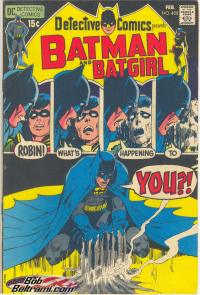
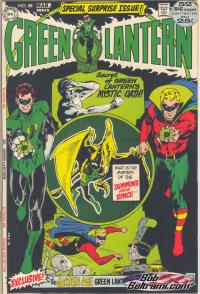
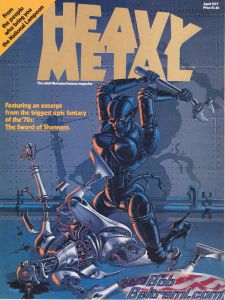
(1-July-06) Not exactly appropriate reading material for a 12 year old, I wasn't exposed to Heavy Metal until my High School years in the 80's. After seeing the animated feature film (at the Midnight Movies during college years) the magazine caught my interest to a greater degree.
Heavy Metal Magazine #1 (1977) has a lot of good stuff, including the wordless "Arzach" by Jean Giraud (AKA Gir, AKA Moebius), "Den" by Richard Corben and lots more. It's a fun read and a classic book.
Comic Book Collection Database
Last Update: Ver. 1, Rev. 5 (August 3, 2006)

By the late 90's the collection was getting big enough that trying to manage it was becoming a problem. Finding particular issues was becoming an increasing challenge as I'd hunt through boxes, sometimes without success. It was also becoming more common to pick up a back issue only to find I already had it (D'oh!). I realized that I had to do something.
Long story short, in late 1998 I created a database in Microsoft Access to store all of my comics and act as a management tool. Now I have no trouble finding any given book and I know exactly what I have in the collection. What's more, it only stores the info that I'm interested in. So entering in a new comic is quick and easy.
If you are interested in having a copy of the database, free of charge, download the Comic Book Collection Database by clicking on the link below.
- Requirements:
- Microsoft Windows 2000/XP
- Microsoft Access 2000 or later
- Features
- Reports and queries provide:
- Total number of comics, issues per title, per series and per publisher
- Printed list or catalog of your entire collection and subscriptions
- Separate report of bronze age and earlier books
- Lost book report for insurance purposes
- Statistical information and cost reporting
- The database stores the following information:
- Publisher (DC, Marvel, Dark Horse, etc.)
- Title (Detective Comics, Uncanny X-Men, Adventure Comics, etc.)
- Series (Batman, X-Men, Superman, etc.)
- Current Subscription (Yes / No Checkbox)
- Issue Number
- Issue Date
- Cost (Actual price paid)
- Comments (Any relevant information you want to note)
- Storage Location (Where you store the book)
- This is the full, complete database. It is not a trial, lite or Jr. version!
- Free / No Charge / No Donation / No Subscription / No Ads
- Complete access to all features and functions
- No limit on the number of titles, issues and series you can store
- No time-limit on use: It's yours forever (see Legal Stuff, below)
- Reports and queries provide:
Legal Stuff
The Comic Book Collection Database (CBCD) is available free of charge for personal, individual, non-profit use. The database is presented in its original form and no attempt has been made to lock or in any way obstruct any changes, additions or adjustments that an individual user chooses to implement for his/her own use. As long as you have Microsoft Access 2000 or later, you should have access to modify any and all of the of the system.
The database was written to be simple and was never intended for public release. It is not a serious or professional undertaking. It was simply suggested that I share it with fellow collectors and I didn't see why I shouldn't have it on the web site for download.
The CBCD was created to store my collection and meet my needs. As a result, many possible data fields have not been included. For example, I have not included fields to record character appearances, creative talents (writer, pencils, inks, etc.) or the comic’s grade. I haven't included a mechanism to sell or remove comics (other than deleting them, thereby deleting the history). And I didn't include a facility to scan in and store comic covers or print labels for my boxes. I simply didn't want to take it that far (although the labels are a good idea and may be included in a future revision). Anyway, you can certainly add these fields and functions and any others you want.
This is important: You may not distribute, modify, transmit, reuse, report, or use the CBCD for public or commercial purposes without the express written consent of bobbeltrami.com. You are not being granted a license under any copyright, trademark, patent or other intellectual property right, period.
All such rights are retained by bobbeltrami.com. Downloading this file signals your agreement with and acceptance of these terms.
Download the CBCDA last note. If you find an error or omission, or you have an idea, please don't hesitate to send me an e-mail (see "Contact Us" link at bottom of page). I may not respond or use your idea, but I read everything that comes in.
Rev. 5 changes:
- All statistical and cost reporting has been combined.
- All queries and reports have been normalized for consistency.
- Major rework of the ReadMe file.